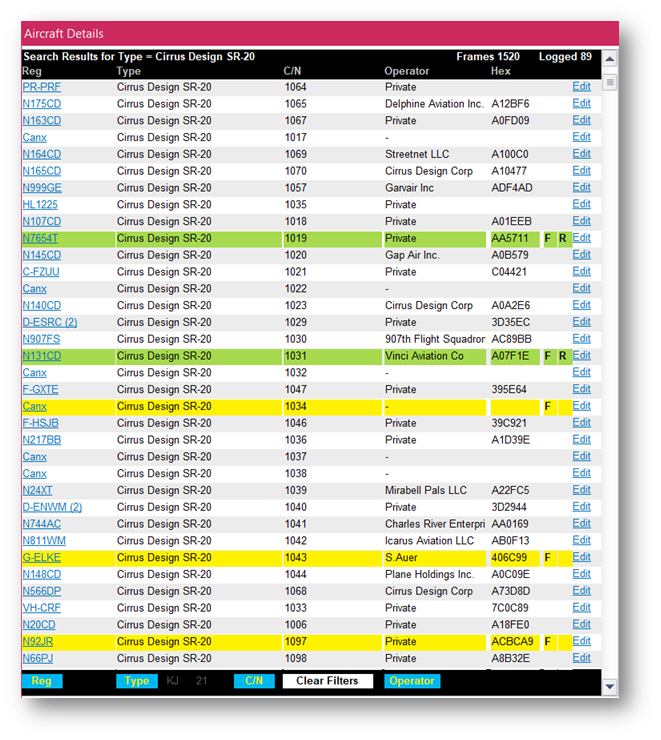


Note that the Operator, not the owner, is shown – these can differ e.g. This shows the Registration, Type, Construction Number (C/N), Operator and Hex (Hexadecimal) Code. If it is found, the top line is displayed G-AB* will fetch all from G-ABAA to G-ABZZ. * is for single or multiple wildcard characters e.g. For example G-ABC? will fetch G-ABCA, G-ABCB, etc. ? is for a single wildcard character, ? for two etc. Note that you can use wildcards (? or *) in Current/Historic Reg and Con No searches. You have the option of using the TAB key or selecting GO to run a search. Note that the screenshots may also show extra lines and facilities that are only used by Editors to input new and updated information. Tips: – Where this icon is shown press it for more information on the feature. These are hyperlinked to the relevant section. The Wiki goes through each of the main screens in the order below then adds information on additional resources, abbreviations, user and editor aspects.
#Planeplotter operator how to
It steps through each of the database screens in order and explains the information shown, how to access it and any inputs that are required from you.
#Planeplotter operator manual
No position reports are carried by HF selcal but it provides yet another means of monitoring aircraft that PlanePlotter can perform.This Wiki / User Manual helps you to get the most information from the database. PlanePlotter can decode HF selcal tones that can be used to identify an aircraft communicating on the HF air bands.
#Planeplotter operator software
Consult the software licence for the special terms and conditions applicable to this feature. In this way, each user enjoys the reception coverage of all the cooperating users together.

PlanePlotter archives all the digital data that it receives and decodes to a log file.PlanePlotter shows a table display of messages received and decoded from live aircraft transmissions.PlanePlotter can process and display Mode-S ADS-B position reports captured by the Kinetic SBS1 mode-S receiver and the associated BaseStation software or by the AirNav Systems RadarBox receiver. PlanePlotter can decode ACARS messages, display the message content and plot any positions on a chart. These include embedded position reports, AMDAR reports, ADS reports, HFDL reports and others. PlanePlotter plots aircraft positions, altitudes and times decoded from the message traffic that it receives. PlanePlotter archives all the digital data that it receives and decodes, to a log file. PlanePlotter shows a table display of messages received and decoded from live aircraft transmissions. Using PlanePlotter, you can see a radar-like display of all those aircraft around you that are transmitting the appropriate digital messages. PlanePlotter receives and decodes live digital position reports from aircraft and plots them on a chart.


 0 kommentar(er)
0 kommentar(er)
